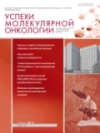RANK/RANKL/OPG LIGAND-RECEPTOR SYSTEM AND ITS ROLE IN PRIMARY BONE NEOPLASMS (LITERATURE ANALYSIS AND OWN DATA)
- Authors: Gershtein E.S.1, Timofeev Y.S.1, Zuev A.A.1, Kushlinskii N.E.1
-
Affiliations:
- Laboratory of Clinical Biochemistry, N.N. Blokhin Russian Cancer Research Center, Ministry of Health of Russia, Moscow
- Issue: Vol 2, No 3 (2015)
- Pages: 51-59
- Section: REVIEW ARTICLES
- Published: 18.12.2015
- URL: https://umo.abvpress.ru/jour/article/view/45
- DOI: https://doi.org/10.17650/2313-805X.2015.2.3.51-59
- ID: 45
Cite item
Full Text
Abstract
About the authors
E. S. Gershtein
Laboratory of Clinical Biochemistry, N.N. Blokhin Russian Cancer Research Center, Ministry of Health of Russia, Moscow
Author for correspondence.
Email: esgershtein@gmail.com
Герштейн Елена Сергеевна Russian Federation
Yu. S. Timofeev
Laboratory of Clinical Biochemistry, N.N. Blokhin Russian Cancer Research Center, Ministry of Health of Russia, Moscow
Email: esgershtein@gmail.com
Russian Federation
A. A. Zuev
Laboratory of Clinical Biochemistry, N.N. Blokhin Russian Cancer Research Center, Ministry of Health of Russia, Moscow
Email: esgershtein@gmail.com
Russian Federation
N. E. Kushlinskii
Laboratory of Clinical Biochemistry, N.N. Blokhin Russian Cancer Research Center, Ministry of Health of Russia, Moscow
Email: esgershtein@gmail.com
Russian Federation
References
Supplementary files






